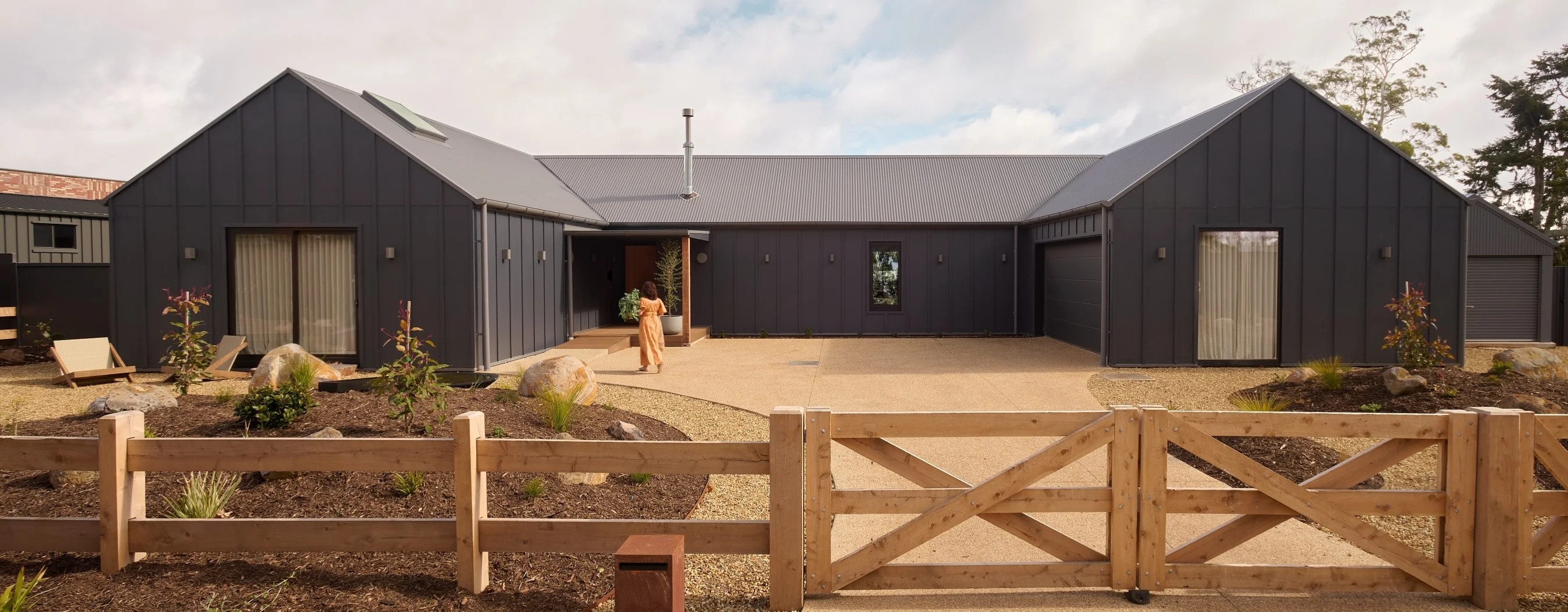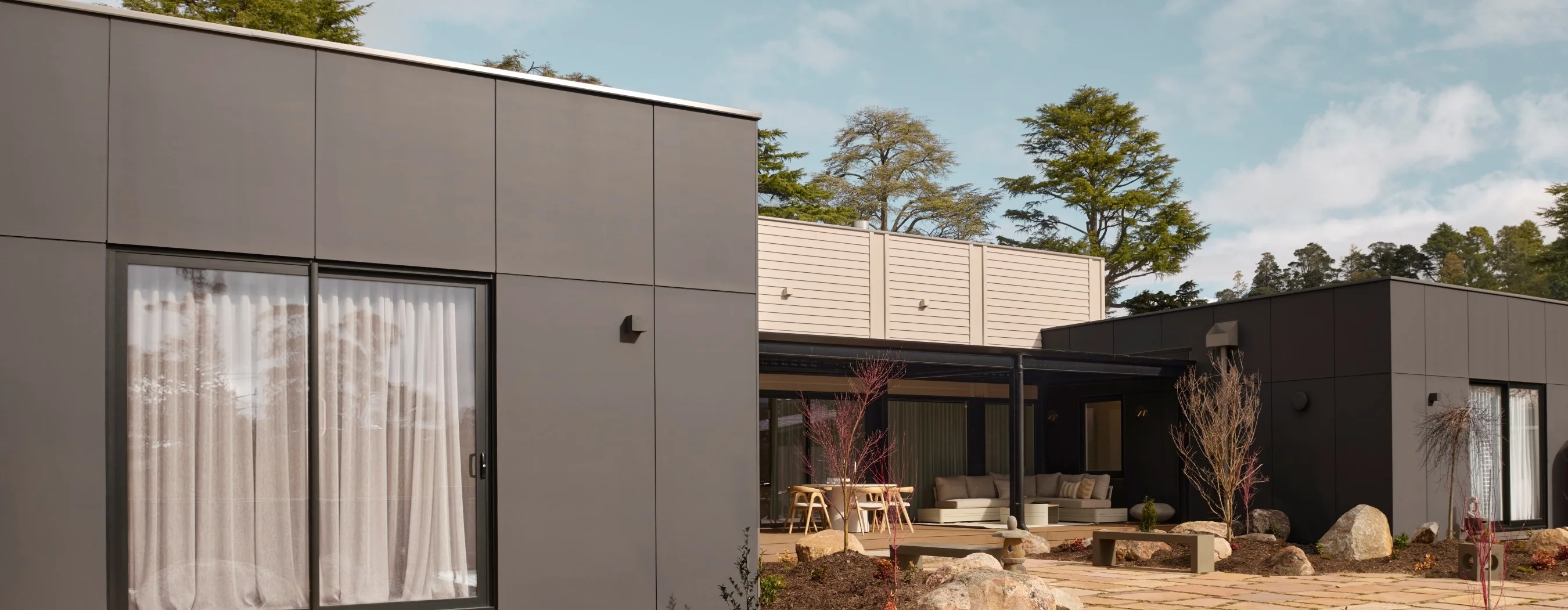Using boxy, angular shapes and linear lines on your home’s façade is a great way to create a bold, edgy design that stands out front the crowd. However, this modern style can also run the risk of looking cold and characterless without a few key considerations. Here are three rules on how to use geometric forms for a one-of-a-kind home that is packed with personality and avoids looking monolithic.
RULE 1: DIFFERENTIATE PARTS OF THE FACADE WITH CLADDING
Geometry and symmetry are timeless trends in home design that immediately create a refined, contemporary look. While it is a simple and classic style, homeowners who want a geometric look for their façade should think outside the square when it comes to cladding.
Breaking up sections or storeys by mixing horizontal and vertical lines, as well as experimenting with different widths and multidirectional patterns, will ensure you’re on your way to achieving a truly unique design. Try using a product such as Scyon™ Matrix™ cladding – a lightweight, innovative material that lends itself perfectly to the trademark boxy shapes found in geometric-style homes – in combination with cladding in a different shape or colour.
An example would be to juxtapose larger panels of horizontal Stria™ in a light grey shade on the bedroom exterior with vertical, crisp white Axon™ on the lounge room exterior to differentiate parts of the home. This adds just enough interest to break up the facade while maintaining a sleek and streamlined look.
RULE 2: USE MIXED MATERIALS TO ADD DEPTH AND VISUAL INTEREST
A geometric home doesn’t have to be predictable – using unexpected materials is a fun way to enhance a clean, simple design and achieve a unique look. Thinking beyond traditional use of materials is a must. Textural combinations can also bring balance to a hard exterior, for example the industrial feel of steel and cement-based cladding can be softened with Scyon vertical weatherboards, whose traditional look contrasts the sharp, angular lines.
Selecting two or three different finishes that contrast can immediately make a tired home look edgy and modern. If your walls are predominantly covered with cement composite cladding, bring in some warmth with touches of natural, earthy materials such as a timber garage door or a brick fence.
For an eye-catching feature, try incorporating stone, corrugated iron or other recycled materials into your design. By keeping the overall lines of the façade simple, textural materials can shine as the focal point and create a high-end, custom-made feel.
RULE 3: ADD A POP OF COLOUR
Introducing smaller touches of colour to your home’s exterior is a quick and easy way to add your individual personality without the risk of choosing a colour you’ll no longer love for your entire home, which can be a costly and time-consuming exercise. Adding a new hue to the facade through subtle accents can also tie in your home’s interior, for example using a navy blue feature wall to lead into a coastal colour palette.
Darker hues used for larger areas, such as charcoal cladding on an exterior, can immediately make a façade appear sleek and modern. A monochromatic scheme is the perfect choice to highlight geometric forms and boxy shapes, so if you’d prefer to keep the overall palette neutral, think beyond feature walls with a yellow front door or a red letterbox – both colours work really well with grey and charcoal. You can even consider more temporary options, like bringing in some colourful pot plants or a vibrant sun lounger to add a playful touch to a geometric façade.





